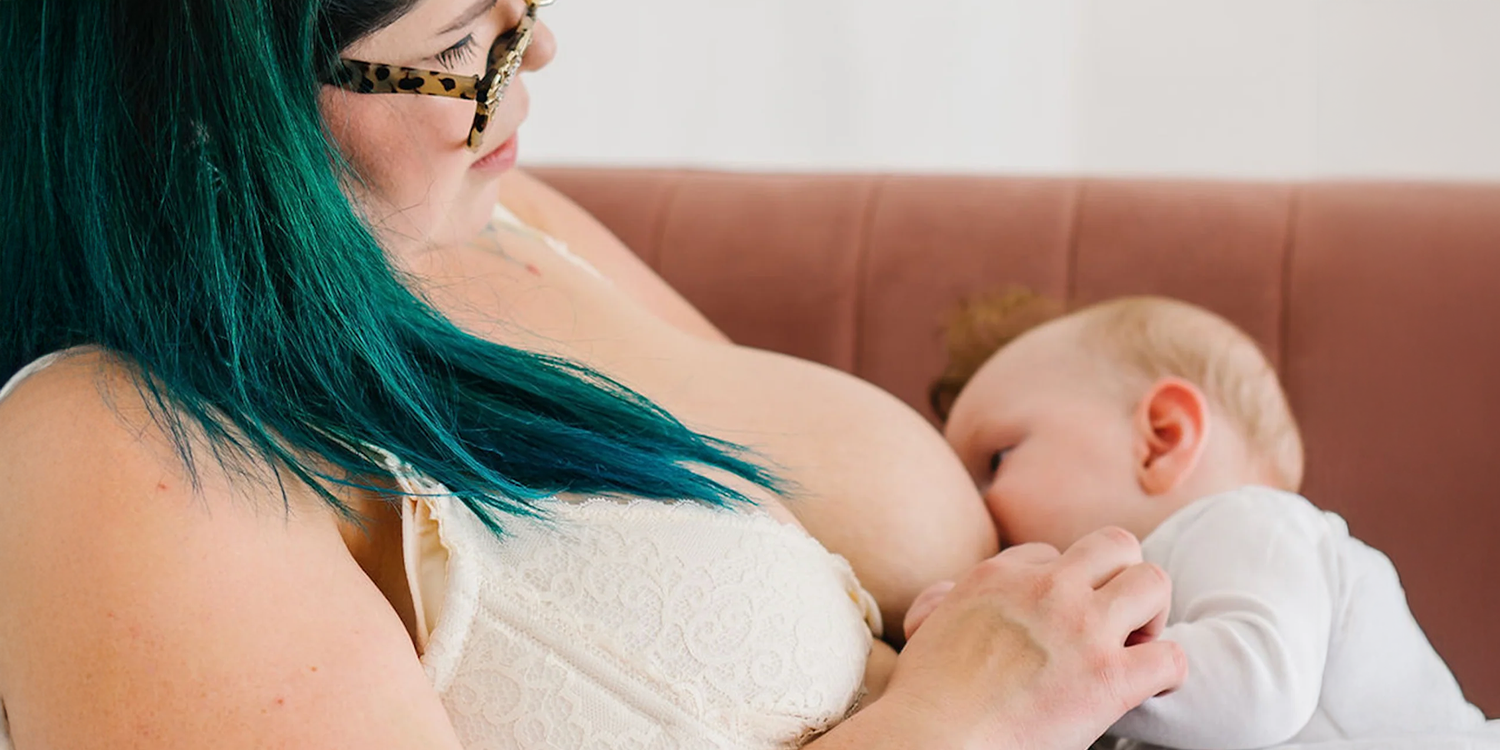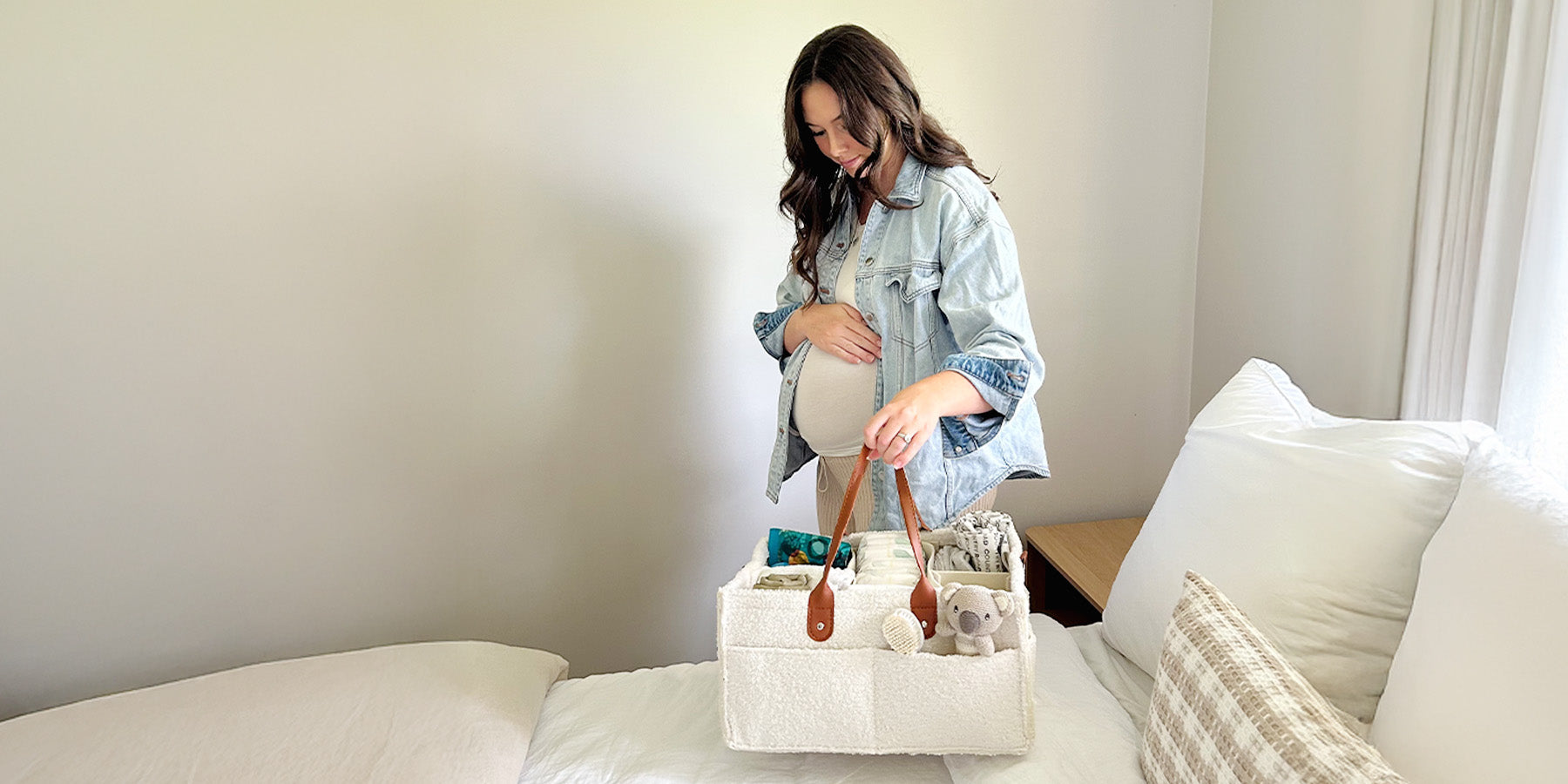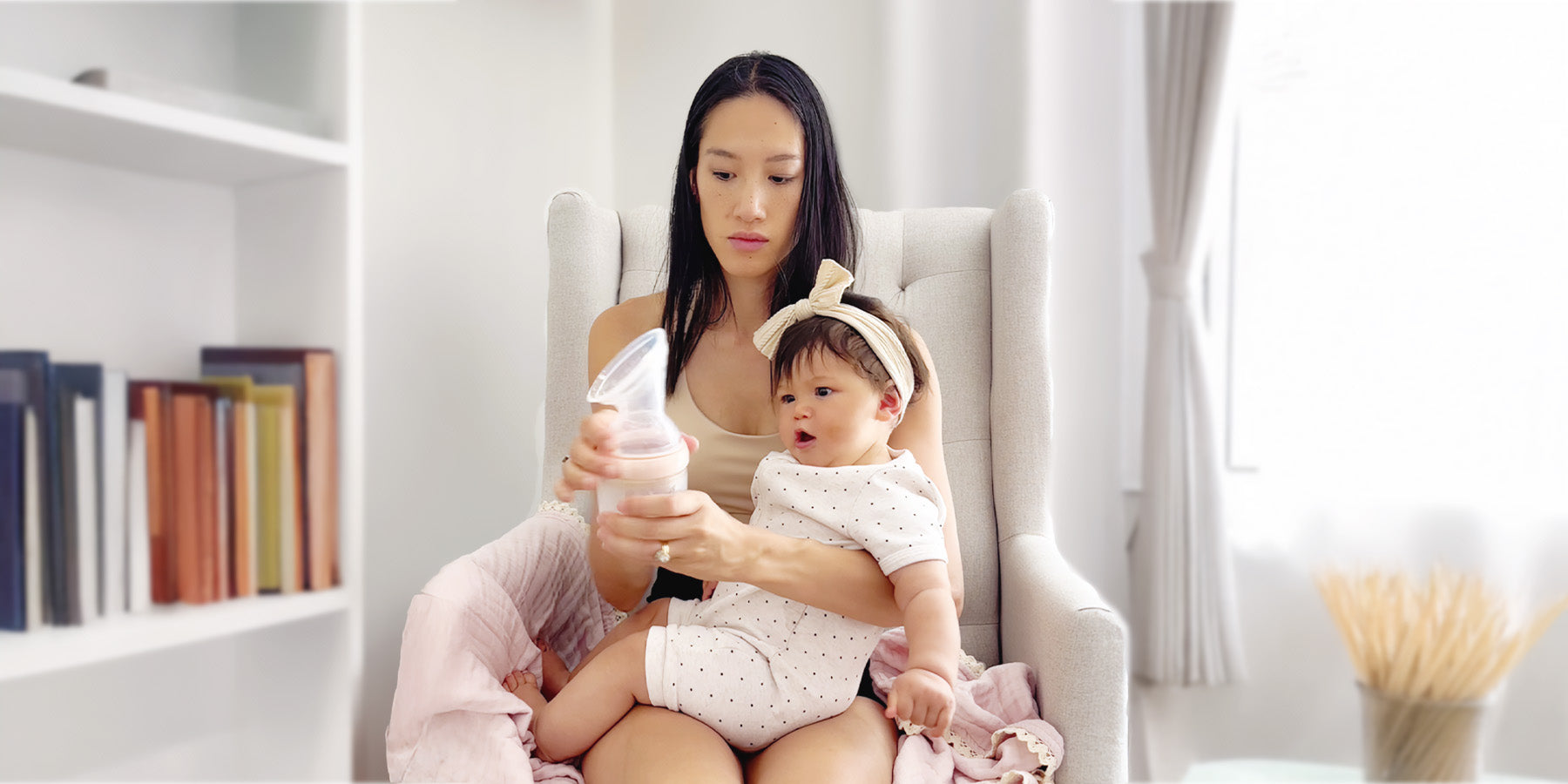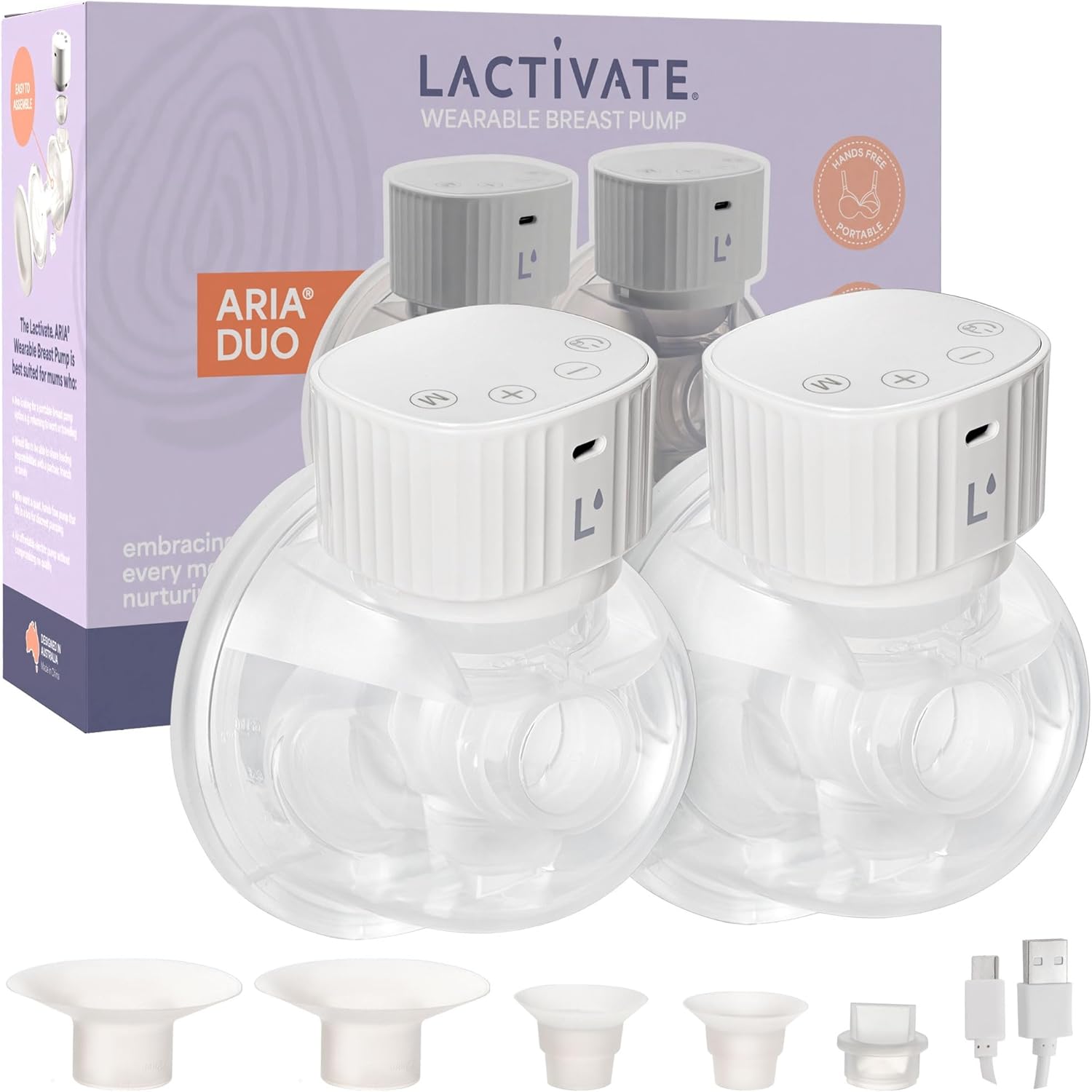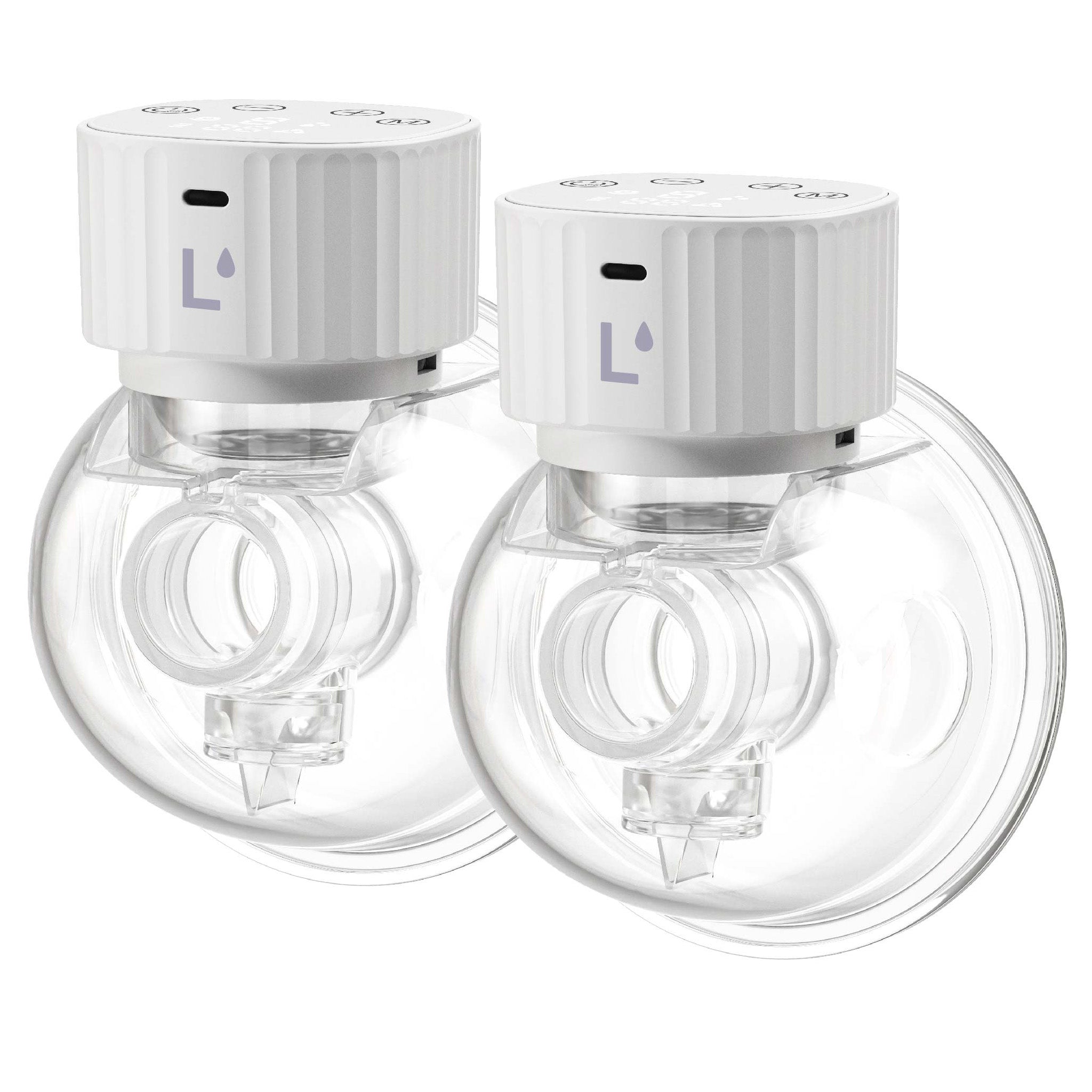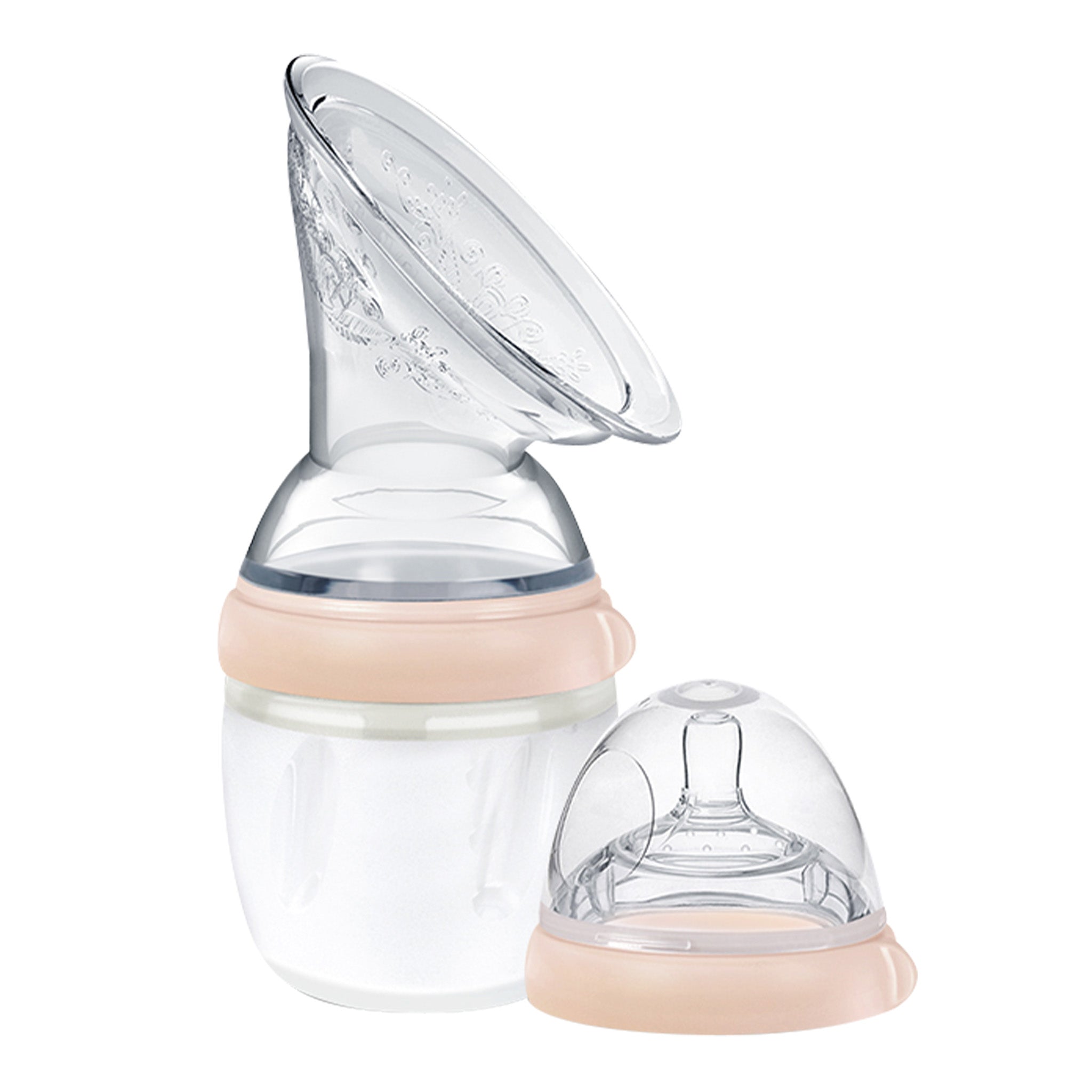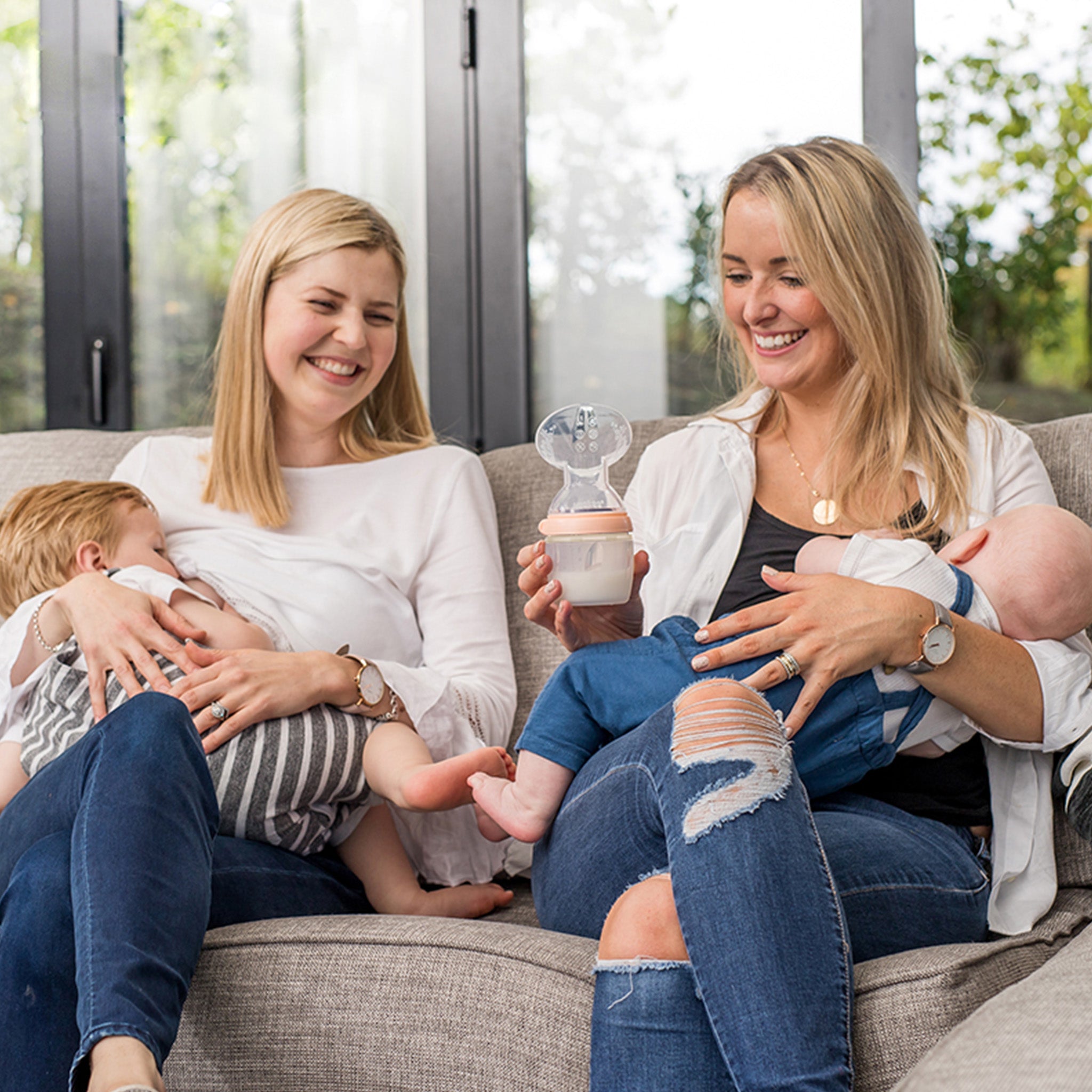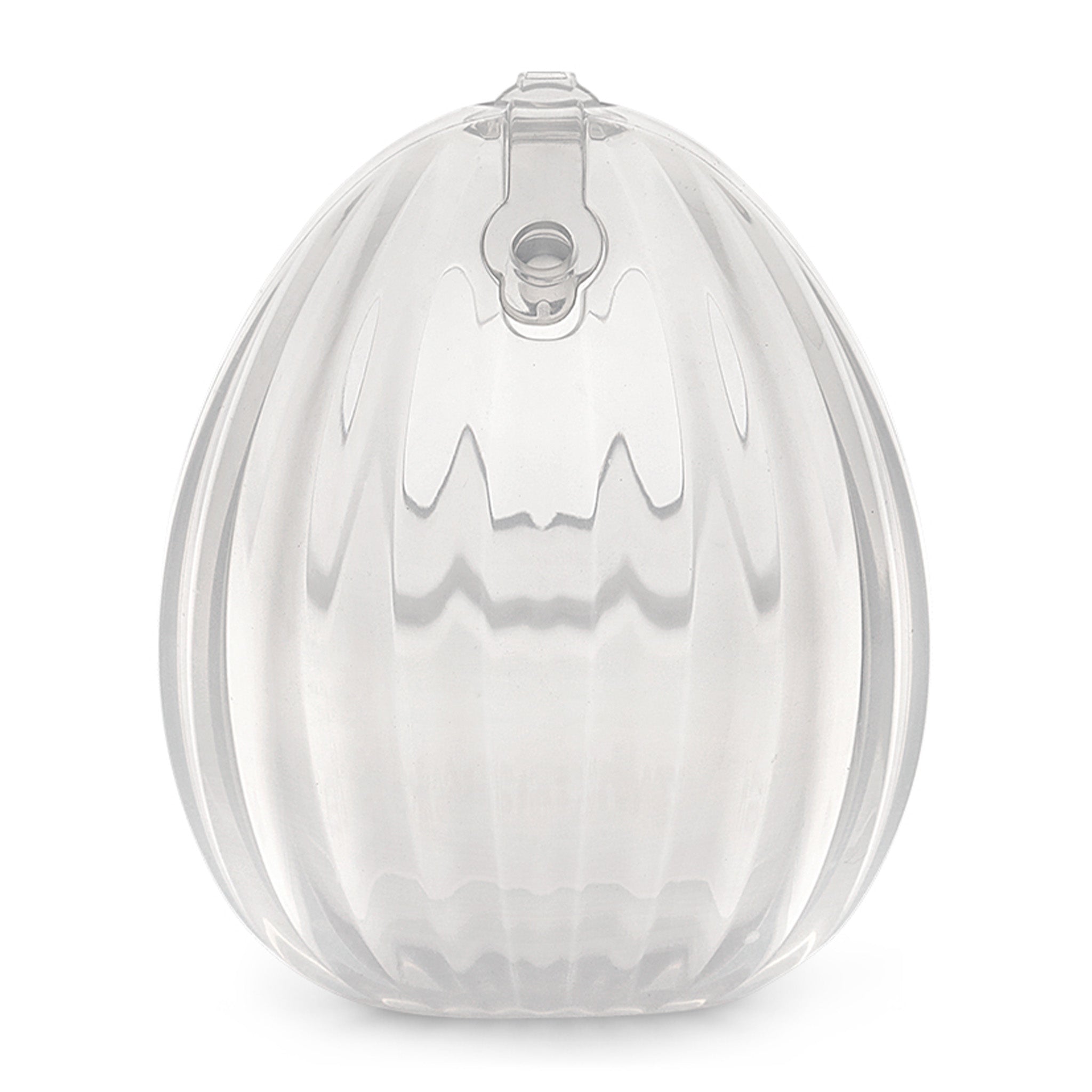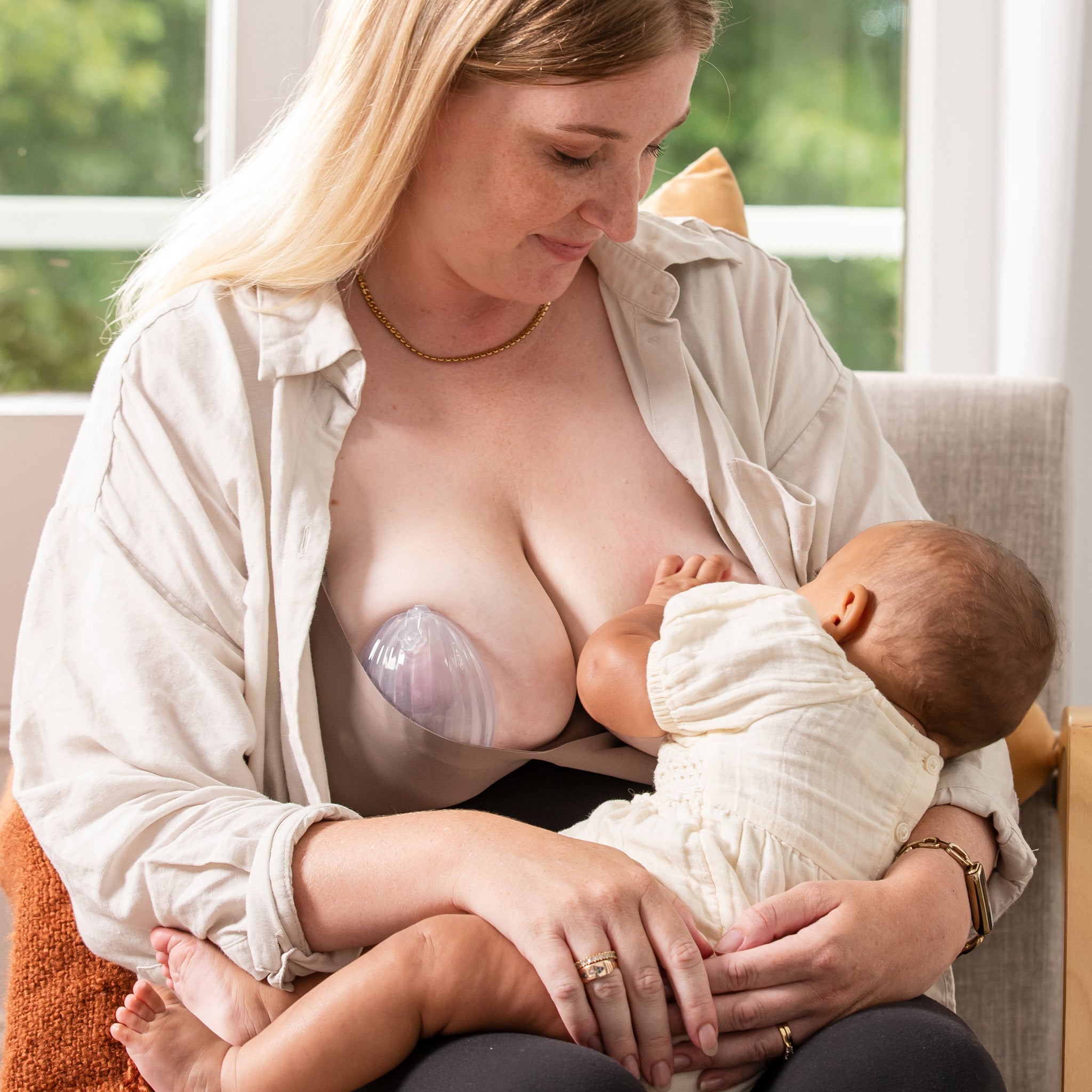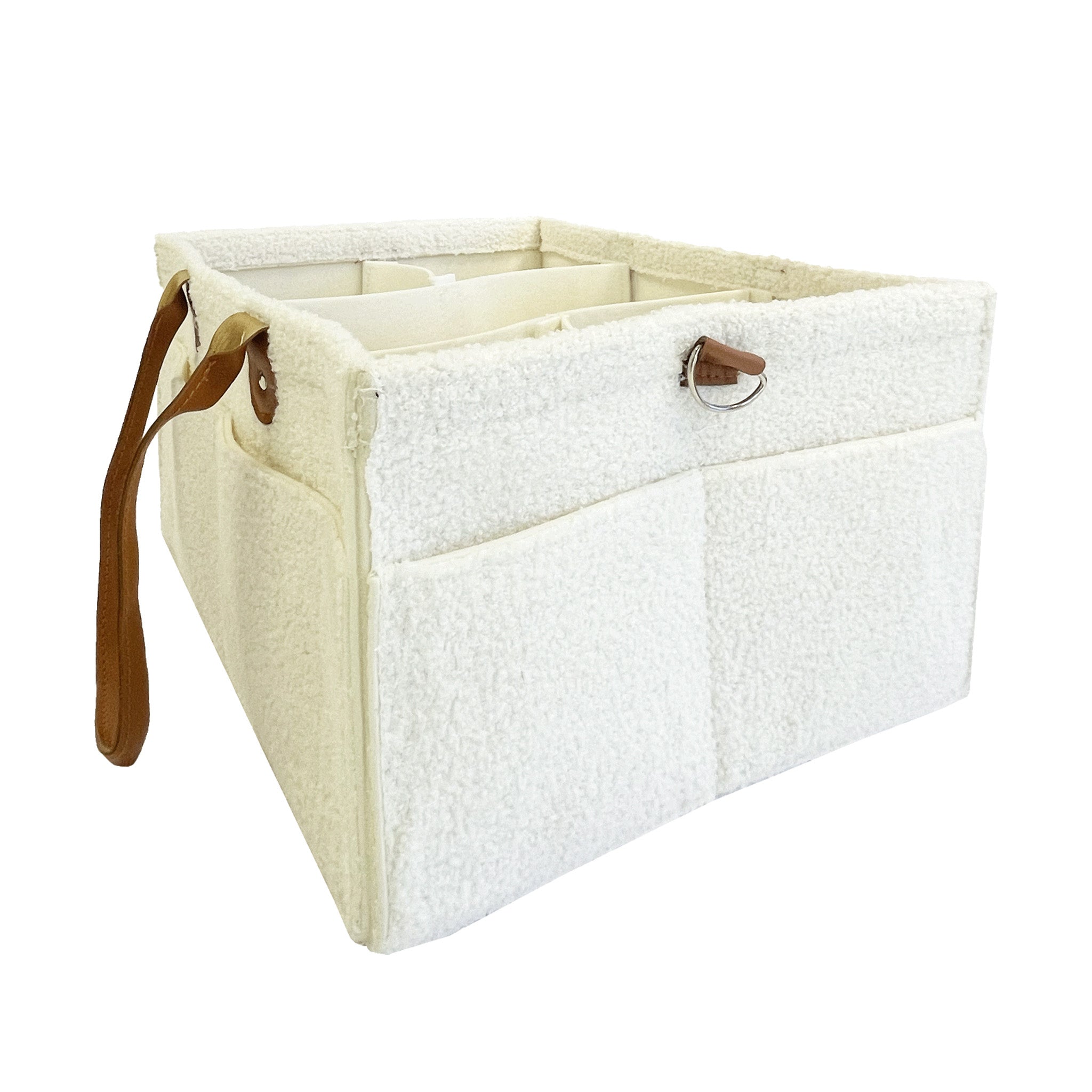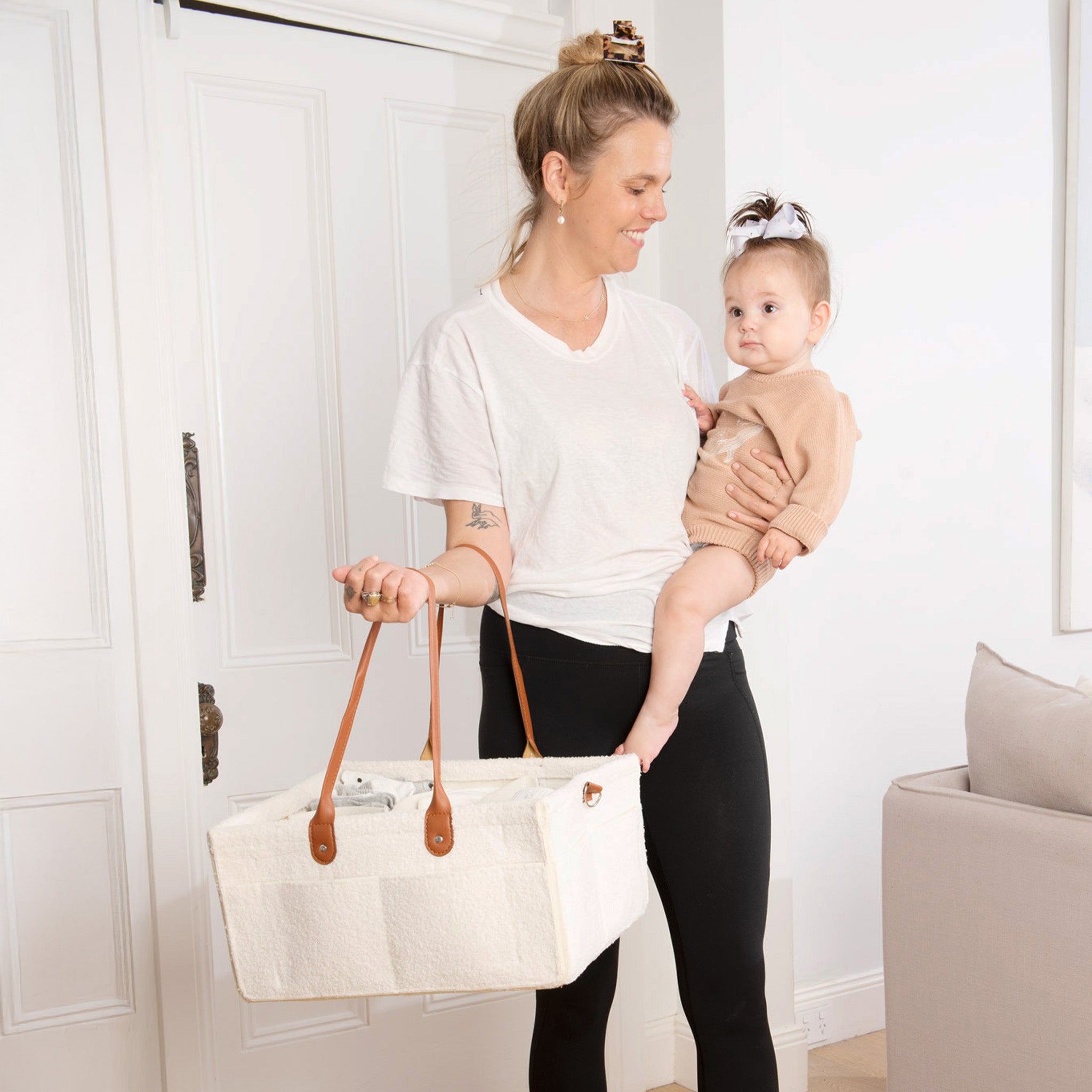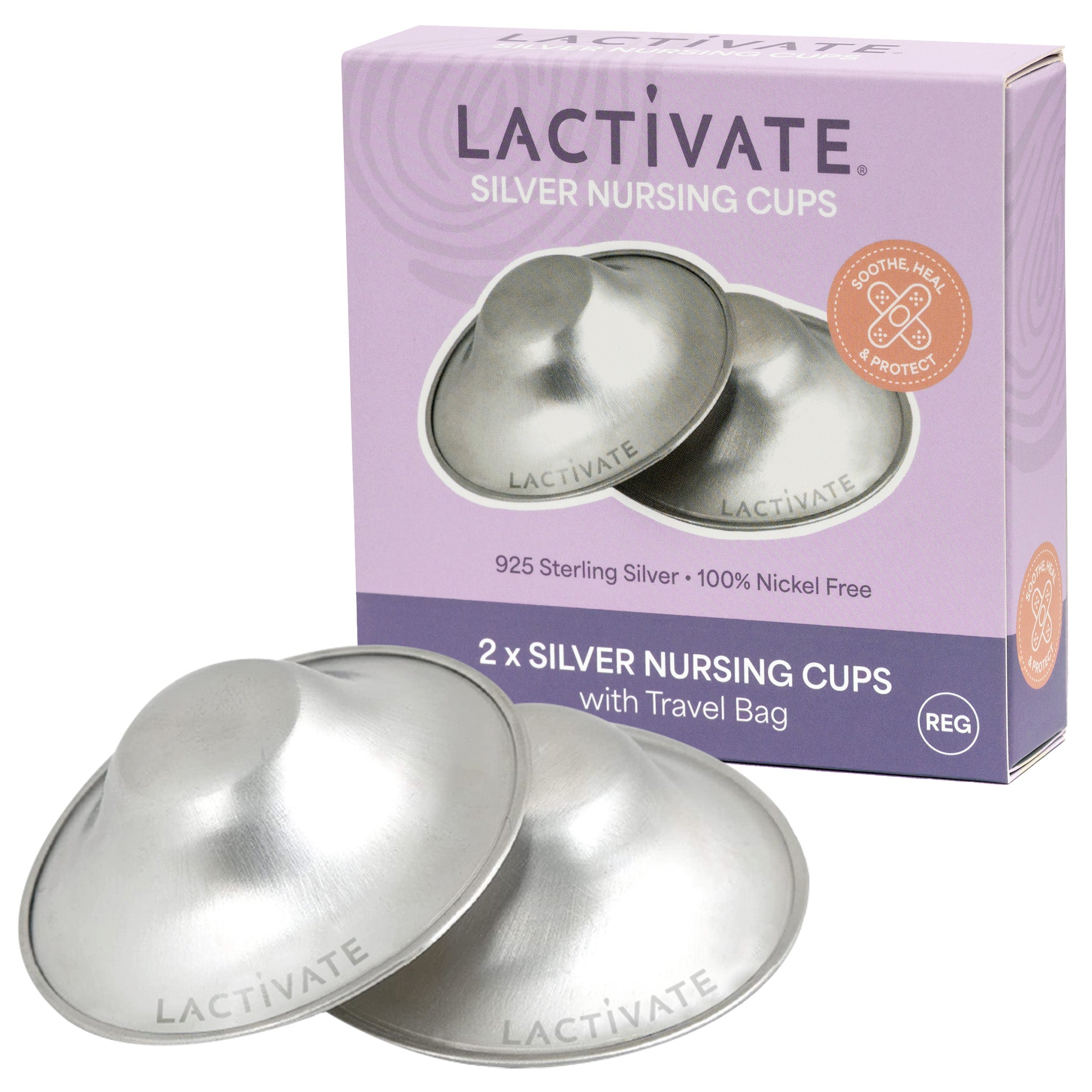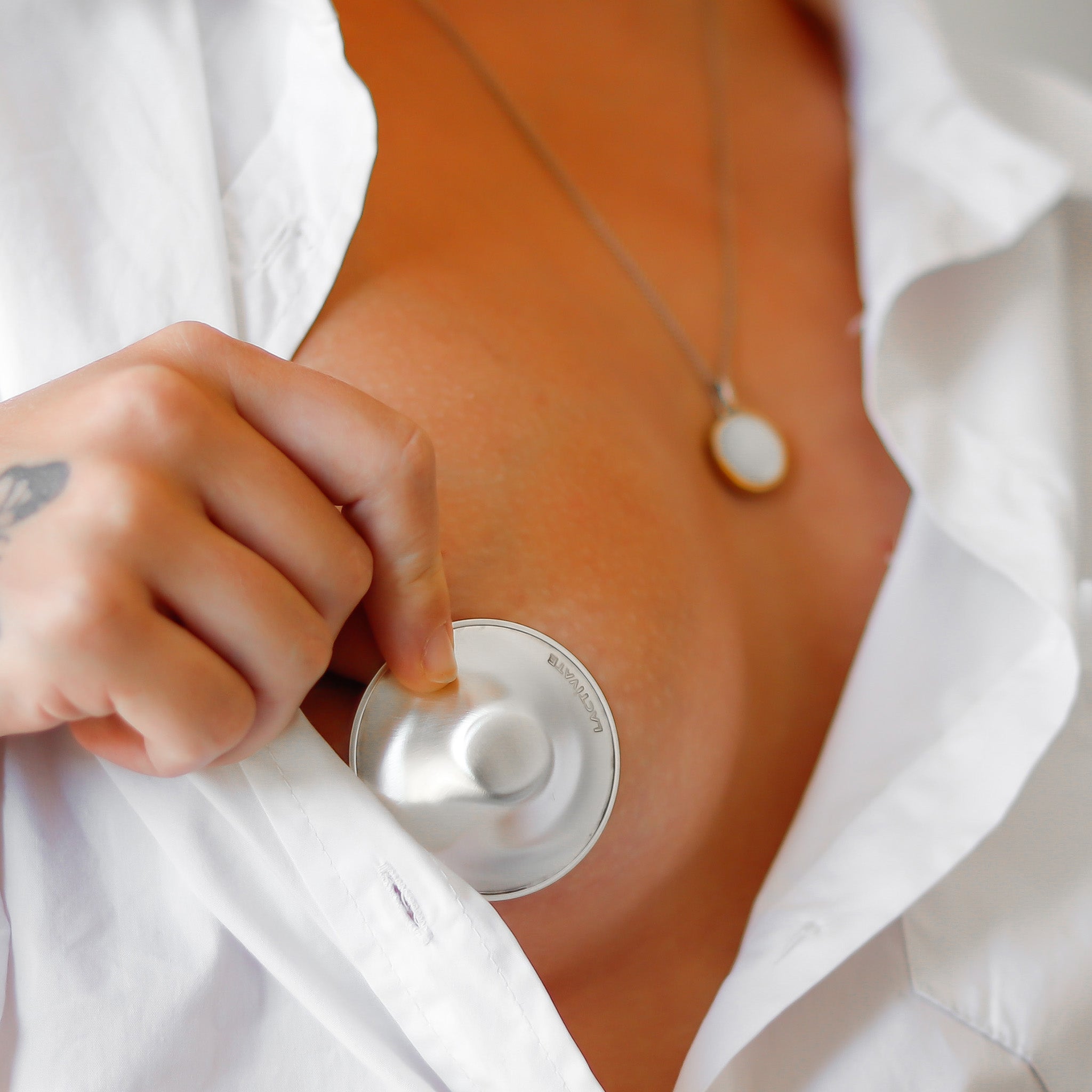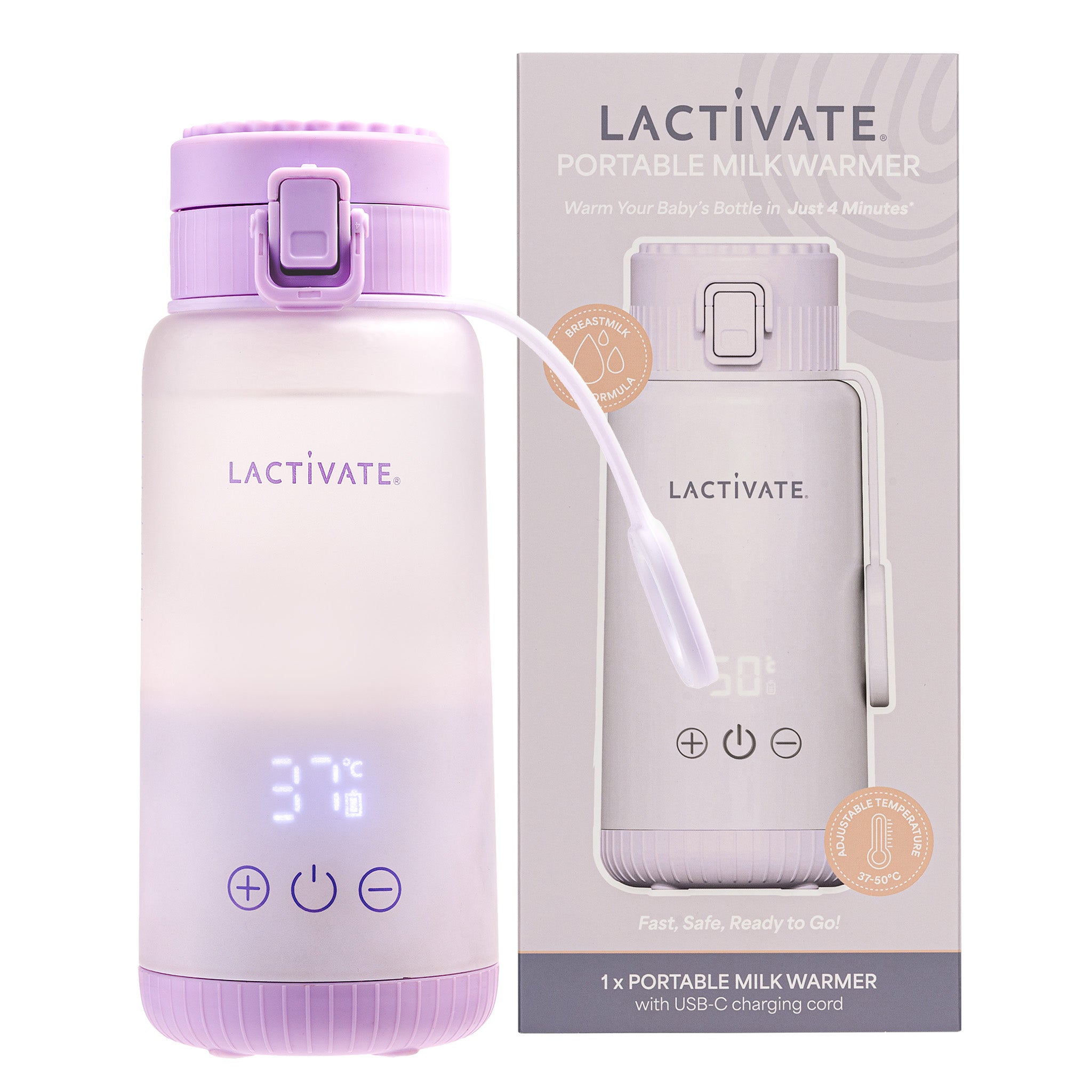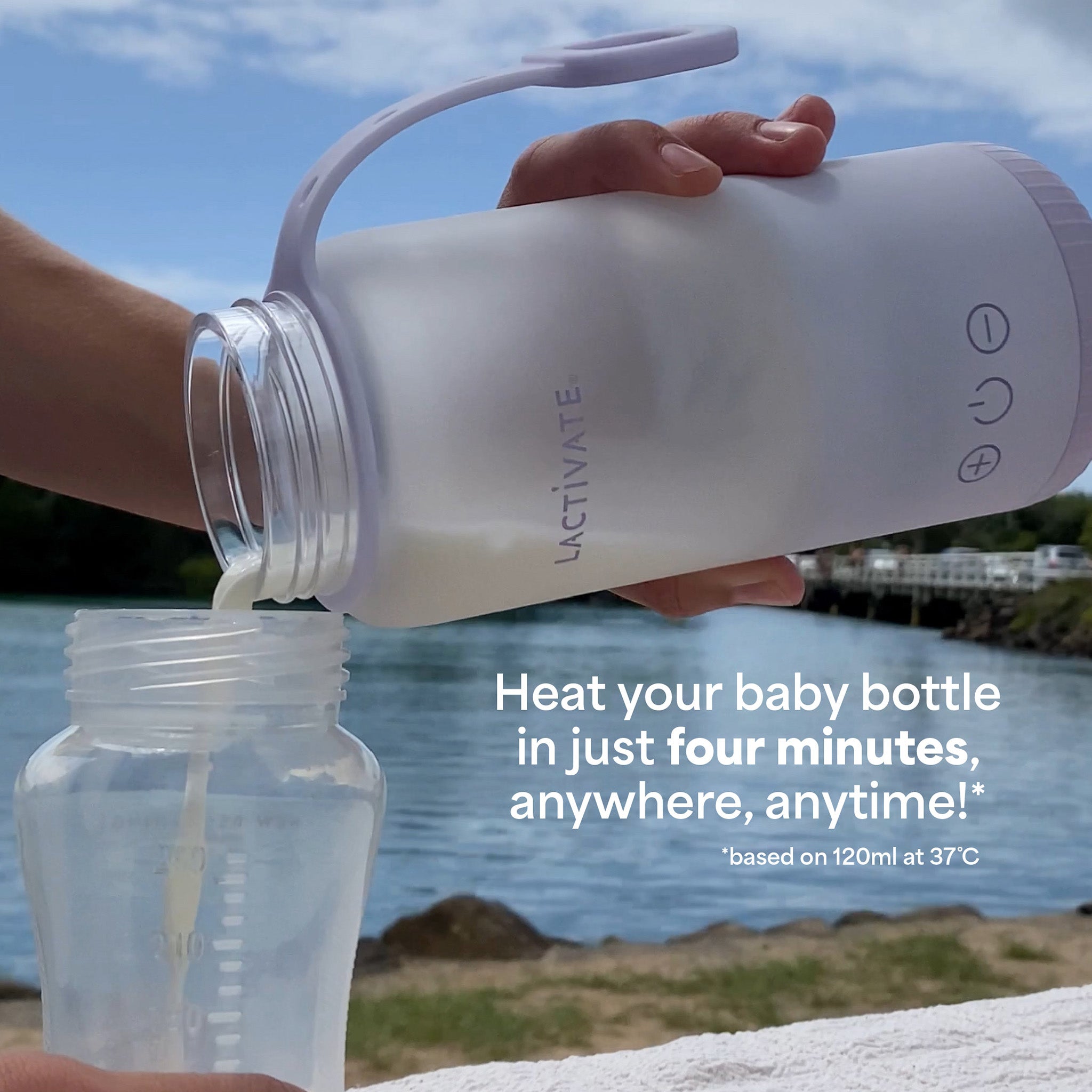Whether you’re breastfeeding, pumping or formula feeding, it takes time to figure out when and how much to feed your baby. If you're thinking about pumping or feeling a little stuck, this guide helps you understand when and how much to pump in the first year.
Ahh sweet, little newborns. So lovely but so unpredictable! There’s a reason that the first year goes by in such a blur. You're learning so much about yourself and your baby and trying to juggle this new way of life.
Feeding is a shared experience for new parents everywhere but can be fraught with lots of questions and many, many opinions (so many opinions!). We’ve said it before and we’ll say it again: we support you feeding your baby in whatever way works for you and them. You got this, mama!
Read on to find answers to your questions about pumping and feeding.
- What is Pumping and Why Would I Pump?
- Pumping Breast Milk: How Much and When in the First Year
- Pumping Basics: How to, When, and How Long to Pump
What is pumping breast milk and why would I pump?
Many parents choose to pump breast milk. Pumping is when you attach a manual or electric breast pump to your breasts to help you express milk. You can feed your baby the breast milk with a bottle straight away or store the expressed breast milk for later.
There are many reasons why you would need to pump, you might:
- Prefer it
- Have other people looking after your baby
- Want to be able to share feeding duties with your partner or other carers
- Have low milk supply, pumping can help stimulate more milk production
- Have a latching issue like tongue-tie and baby isn’t feeding well on the nipple
- Have multiples and pumping can help with the logistics of feeding twins or triplets
- So many other reasons!
Whatever the reason you choose to pump breast milk, your new little bundle of joy (unhelpfully) doesn’t come with an instruction manual. They do try to tell us when they are hungry or full, and we promise you’ll get the hang of it soon!
Until then, here’s our handy reference guide on how much and how often babies eat at each age.
Breast milk pumping guide: how much and when in the first year
The below chart explains how often and how much milk to pump.
Please note that this is only a guide. Talk to your health care provider if you’re at all concerned about the amount your baby is drinking.
| Age | Amount of milk | Frequency of feeds |
|
Newborn |
30 - 60ml |
Every 2 - 3 hours |
|
2 - 4 weeks |
60 - 90ml |
Every 2 - 3 hours |
|
2 - 3 months |
120 - 150ml |
Every 3 - 4 hours |
|
4 months |
120 - 180ml |
Every 3 - 4 hours |
|
6 months |
180 - 230ml |
Every 4 - 5 hours |
|
6 - 9 months |
180 - 230ml |
Every 3 - 4 hours during the day |
|
9 - 12 months |
180 - 230ml |
Every 3 - 4 hours during the day |
Pumping basics: how to, when, and how long to pump
Now that we know how much milkthe average baby needs, let’s talk about how and when to use a breast pump. Remember, breast pumping can seem complex at first, so give you and your baby time and space to settle into a routine or rhythm.
Which breast pump should I use?
There are a variety of different manual, electric and hospital grade breast pumps available. If you are primarily breastfeeding and want to pump occasionally, go for a Manual breast pump like the Haakaa Silicone Breast Pump. Electric and hospital greade breast pumps are for exclusive pumpers, working mums and those who need to support or build their breastmilk supply.
Check out our Essential Guide to Choosing a Breast Pump to find out what’s right for you.
How old should my baby be before I start pumping?
When to start pumping depends on your reasons for pumping breast milk. If you’re happy breastfeeding and your baby is healthy and feeding well, wait until 6 weeks or so to start pumping. Don’t overcomplicate things for yourself in those first weeks. If your baby isn’t feeding well, or if you have other reasons to bottle feed or mix feed, then you can start pumping whenever it suits you.
Hand expressing colostrum: How and why you should do it
During pregnancy and until your milk fully comes in, try hand expressing your colostrum. Nicknamed “liquid gold”, colostrum contains all the nutrients your baby needs in the first few days of life. Watch how to use Haakaa’s breast pump and colostrum collector to collect and store colostrum.
Read our full blog on colostrum collection and storage here.
When and how often should I be pumping?
The best time for you to pump is in the morning when your milk supply is at its highest. This can help to relieve soreness and engorgement before baby is awake and is ready to start feeding. You can also try pumping between feeds.
If you are primarily or exclusively pumping it is recommended to pump every 2-3 hours throughout the day to keep up with the baby’s feeding schedule. This will equate to 8 pumping sessions per day. Try to pump at least once between 1 am to 5 am as Prolactin levels are at their highest at this time. Prolactin is the hormone that enables your body to make milk. Prolactin levels change throughout the day but peak during the early morning hours, so if you can get one pump in during this time, it will really help.
The more you pump, the more milk your breasts will make. As your baby grows, you’ll get a sense of how much they need in a typical day and you can work out a pumping schedule that suits you best.
Worried about your milk supply? Check out our blog: 5 signs of Low Milk Supply (and what to do about it)
How long to pump in one pumping session?
- Pumping with a newborn - start pumping for 10–20 mins at a time, 8–10 times a day, to encourage milk production. Even if you only produce milk for the first few minutes, the act of pumping will encourage more milk production.
- When you have a steady milk supply - Once your milk has come in you can pump for a little longer. Pump until there are no more drops coming out and your breasts feel empty.
How much milk should I be pumping?
Refer to the above chart to see how much milk you generally need at each stage. On average, you need to pump around 30–60 ml for a newborn. When your milk is fully in and the baby is feeding well, you’ll typically be pumping 750–1000 ml within a 24-hour period.
How do I store pumped milk?
Expressed breastmilk can be stored:
Room Temp: 6 - 8 hours
Fridge: 3 - 5 days
Freezer Compartment in fridge: 2 weeks
Fridge Freezer with separate door: 3 months
Deep Freeze: 6 - 12 months
There are many breastmilk storage options available. Some people choose to use disposable breastmilk bags, plastic containers or glass jars. There are also great eco-friendly and reusable options like our Junobie Breastmilk Storage Bags or the Haakaa Silicone Milk Storage Bags.
How to maximise milk production
- Try power pumping - Also called cluster pumping, power pumping mimics a baby that is cluster feeding. You'll repeatedly empty your breasts, encouraging your body to produce more milk.
Read our detailed guide: How To Power Pump To Increase Supply
Power Pumping Plan
Pump for 20 minutes; rest for 10 minutes
Pump for another 10 minutes; rest for 10 minutes
Pump again for 10 minutes; Finish
Total Pumping Time = 40 minutes
- Check your flange size and fit. A good fit ensures there’s no pain when pumping and will help to maximise milk collection.
- For collecting while breastfeeding, try our best selling Haakaa Silicone Breast Pump. Collect letdown or leakage you would otherlose lose in a breast pad!
- Try Milk Boosters: Milkbar stocks a range of teas, cookies, and vitamins that help boost your milk supply.

